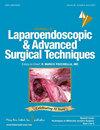求助PDF
{"title":"Clinical Utility of a Novel Minimally Invasive Lens Cleaner.","authors":"Lila Brody, Fatima Khambaty, R Natalie Reed","doi":"10.1177/10926429251376397","DOIUrl":null,"url":null,"abstract":"<p><p><b><i>Introduction:</i></b> Minimally invasive lens cleaning remains a persistent problem. Several internal and external cleaning devices are available, but most products are expensive, interrupt operative flow, require additional materials, or lack universal clinical efficacy. This study evaluates a novel minimally invasive lens cleaner. <b><i>Methods:</i></b> Patients undergoing a laparoscopic procedure from April to July 2025 were included. The number of times the laparoscope was removed for cleaning during the operation was measured. The duration of cleaning time was measured also. The cleaning time included removal, cleaning, reinsertion, and resumption of the operation. A control group utilized the Clearify<sup>©</sup> while an experimental group utilized the novel device. The mean number of lens cleaning episodes and duration of lens cleaning were compared using a <i>t</i> test between the two groups with a <i>P</i> < .05 as significant. <b><i>Results:</i></b> Twenty control and 20 experimental cases were compared, including foregut, biliary, and bariatric procedures. The mean number of cleaning episodes/case for the control group during biliary, bariatric, and foregut procedures was 5.3 ± 1.5, 11.4 ± 6.2, and 11.8 ± 2.7, respectively. The mean number of cleaning episodes/case for the experimental group during bariatric and foregut procedures was .5 ± 0.9 and .3 ± 0 .5, respectively. The mean number of wipes in the foregut and bariatric group was significantly lower for the experimental group (<i>P</i> < .05). The lens cleaner was applicable for 5 mm and 10 mm angled laparoscopes. Longer operations in the control group required more cleaning episodes. However, operative time did not impact the number of cleaning episodes in the experimental group. The mean total time per case in the control group was significantly longer versus the experimental group (<i>P</i> < .05). <b><i>Conclusion:</i></b> The novel lens cleaner was clinically efficacious and significantly decreased the number of cleaning episodes. The product provided a clear view of the operative field while enhancing procedural efficiency by decreasing the number of times operative flow was disrupted.</p>","PeriodicalId":50166,"journal":{"name":"Journal of Laparoendoscopic & Advanced Surgical Techniques","volume":" ","pages":"771-774"},"PeriodicalIF":1.1000,"publicationDate":"2025-10-01","publicationTypes":"Journal Article","fieldsOfStudy":null,"isOpenAccess":false,"openAccessPdf":"","citationCount":"0","resultStr":null,"platform":"Semanticscholar","paperid":null,"PeriodicalName":"Journal of Laparoendoscopic & Advanced Surgical Techniques","FirstCategoryId":"3","ListUrlMain":"https://doi.org/10.1177/10926429251376397","RegionNum":4,"RegionCategory":"医学","ArticlePicture":[],"TitleCN":null,"AbstractTextCN":null,"PMCID":null,"EPubDate":"2025/9/3 0:00:00","PubModel":"Epub","JCR":"Q3","JCRName":"SURGERY","Score":null,"Total":0}
引用次数: 0
引用
批量引用
Abstract
Introduction: Methods: © while an experimental group utilized the novel device. The mean number of lens cleaning episodes and duration of lens cleaning were compared using a t test between the two groups with a P < .05 as significant. Results: P < .05). The lens cleaner was applicable for 5 mm and 10 mm angled laparoscopes. Longer operations in the control group required more cleaning episodes. However, operative time did not impact the number of cleaning episodes in the experimental group. The mean total time per case in the control group was significantly longer versus the experimental group (P < .05). Conclusion:
一种新型微创晶状体清洁剂的临床应用。
微创晶状体清洁仍然是一个长期存在的问题。有几种内、外清洁装置可供选择,但大多数产品价格昂贵,干扰手术流程,需要额外的材料,或缺乏普遍的临床疗效。本研究评估了一种新型微创晶状体清洁剂。方法:纳入2025年4月至7月行腹腔镜手术的患者。测量术中取出腹腔镜进行清洗的次数。同时测定了清洗时间的长短。清洗时间包括取出、清洗、重新插入和恢复操作。对照组使用Clearify©,实验组使用新型装置。两组平均晶状体清洗次数和清洗时间比较采用t检验,P < 0.05为显著性差异。结果:20例对照和20例实验病例进行比较,包括前肠、胆道和减肥手术。对照组在胆道、减肥和前肠手术中平均清洗次数分别为5.3±1.5次、11.4±6.2次和11.8±2.7次。实验组在减肥和前肠手术期间的平均清洁次数为。5±0.9和。3±0。5,分别。试验组前肠组和肥胖组的平均擦拭次数显著低于对照组(P < 0.05)。适用于5mm和10mm角度的腹腔镜。对照组手术时间越长,清洗次数越多。然而,手术时间对实验组的清洁次数没有影响。对照组每例患者的平均总时间明显长于实验组(P < 0.05)。结论:该新型晶状体清洗剂具有较好的临床效果,可显著减少清洗次数。该产品提供了清晰的手术视野,同时通过减少手术流程中断的次数提高了手术效率。
本文章由计算机程序翻译,如有差异,请以英文原文为准。

 求助内容:
求助内容: 应助结果提醒方式:
应助结果提醒方式:


